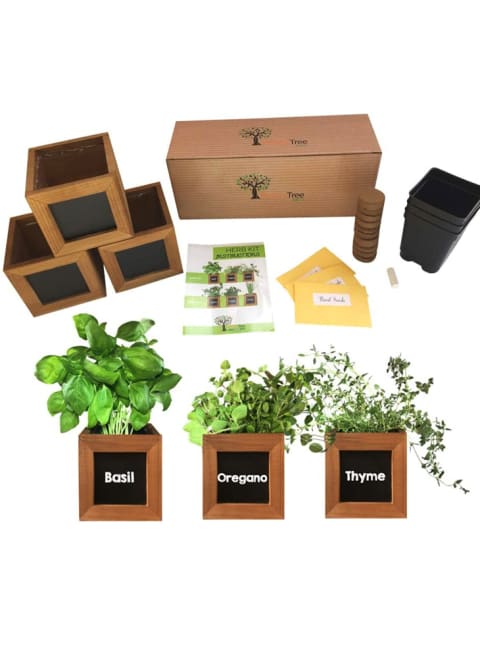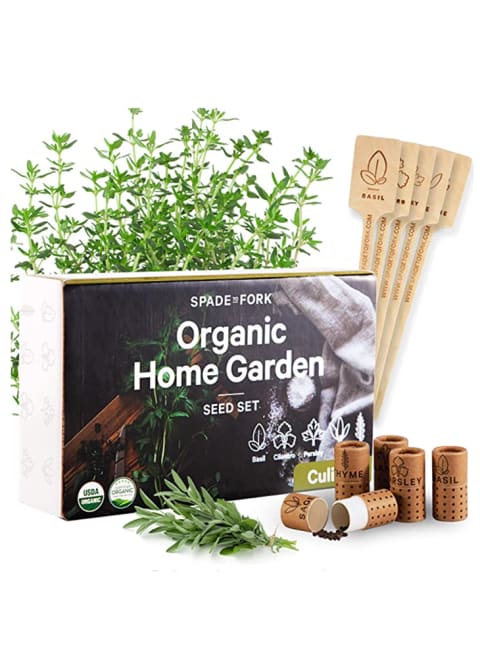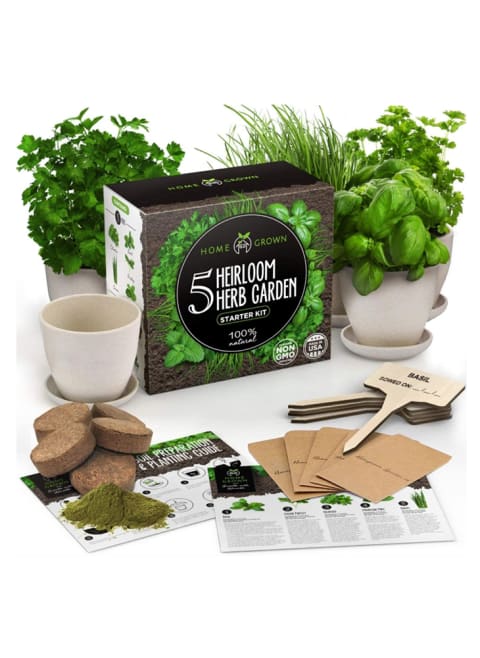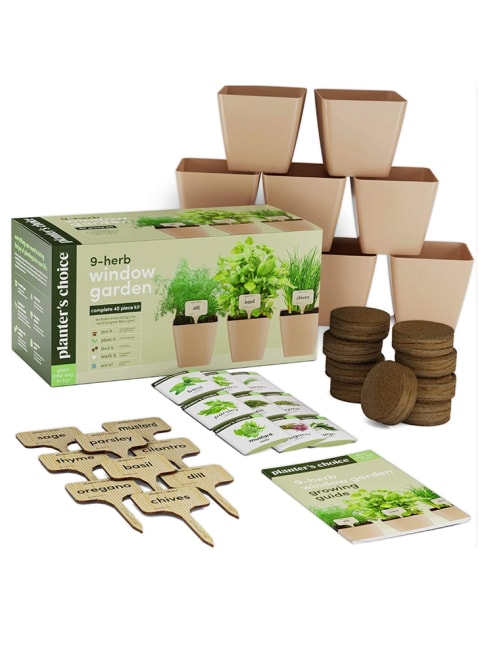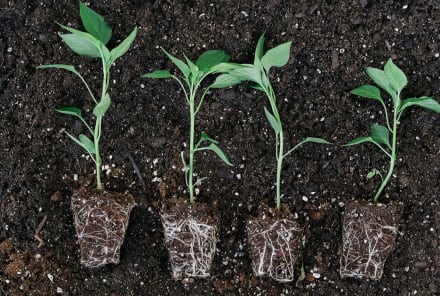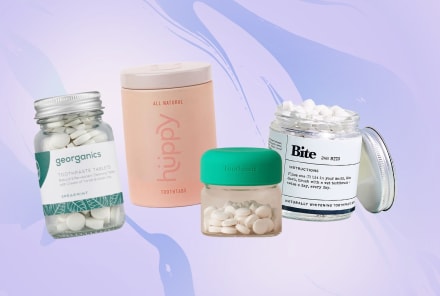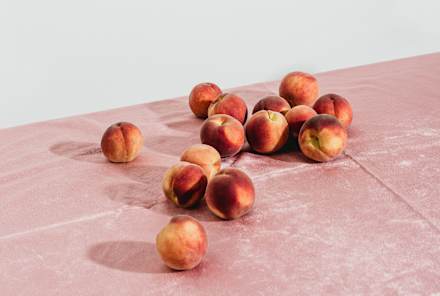Advertisement
A Beginner's Guide To Starting An Herb Garden, No Matter Where You Live

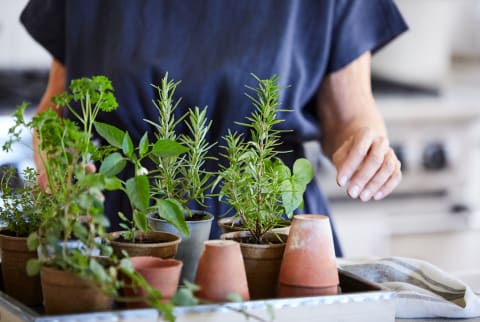
Herb gardening is one of the easiest ways to get your hands in the dirt. Here's everything you need to know about how to start and maintain an herb garden, indoors or outdoors, from scratch or from a kit.
How to choose a site.
Step 1 of creating an herb garden is figuring out where to put it. According to Amy Enfield, a horticulturist at Bonnie Plants, the most important factor to consider here is sunlight.
Outdoors:
"Whether you have a large backyard or a small patio or balcony, herbs will grow well anywhere that receives at least six hours of sunlight each day," she says, adding that the ideal outdoor spot will be southward-facing for optimal light.
Another point to consider when choosing a site is water access. "The ideal spot for your herb garden, beyond having enough sunlight, is someplace with a water source nearby so you won't have to drag hoses or lug heavy watering cans around," says Enfield.
Indoors:
If your outdoor space is limited or doesn't get much in the way of sunlight, you can always cultivate your herbs indoors. Although most herbs love the sun, there are “some herbs like mint, parsley, and thyme [that] are great for growing indoors because they need less light than other herbs to thrive," says Enfield.
The best placement for your indoor herb garden will be, unsurprisingly, the part of your home that receives the most light. Ideally, it's a bright windowsill that faces south.
If your indoor space is also too dark, indoor grow lights can stand in for a sunny window.
How to prep your soil.
Now that you know where the best area is for your garden, it's time to figure out the condition of your soil.
Outdoors:
According to Greg Pongetti, the Living Collections curator at the California State University Fullerton Arboretum, herbs need rich, well-draining soil in order to grow well. "Herbs do not like their roots to be constantly wet, so if your soil drains poorly, they are likely to die," he says.
You can test your outdoor soil drainage by digging a hole about 1-foot deep and 1-foot across. Fill the hole with water, wait 12 hours, and then fill it with water again. This time around, set a timer and see how long it takes for the soil to absorb the water.
Well-draining soil should soak it up in under two to three hours. If yours doesn't drain quickly, you might want to bring some bagged soil into your garden that's specifically for herbs and vegetables.
If you're growing directly in your garden's own soil, Pongetti adds that it's a good idea to "amend" the soil by mixing in 1 to 2 inches of compost into its top layer before planting to help ensure your herbs will thrive.
If you don't have a spacious yard or patio and are limited to a porch or balcony, you may prefer to plant your herb garden in pots. This is also a better choice if your garden area doesn't receive sufficient sunlight.
"Use a high-quality potting mix to fill your containers," recommends Enfield.
Most herbs can grow in a limited space, making it easy to experiment and have a variety of herbs within reach. "An 18-inch container has enough growing space for around five herbs, and a 14-inch container will successfully hold about three plants," says Enfield.
Indoors:
Use a well-draining potting mix that's made for herbs and vegetables to fill your indoor pots. It's also important to make sure that your pots have drainage holes to give excess moisture a place to escape.
How to choose your herbs.
Now the fun part begins: selecting the herbs! Since herbs are easy to grow and take care of, deciding which ones to have in your garden is really a matter of preference.
If you have a favorite herb you always use in the kitchen (or want to start using more frequently), that's a clear choice to begin with. You can also try varieties that aren't readily available at the grocery store.
If you're taking recommendations for beginner-friendly herbs, these are all fantastic:
- Basil: Basil is a delicious herb to have on hand, but it needs ample sunlight (a minimum of six hours a day). Enfield says that basil is "probably the most popular and widely used herb," but it's important to keep it trimmed regularly.
- Mint: Is there anything better than fresh mint? This sweet herb does best when given some shade. "The only caution with mint is to plant it in a container by itself. Otherwise, you will have mint growing everywhere," says Enfield. (More on that below.)
- Oregano: Oregano loves the sun. As long as you place it in a bright area and water occasionally (so the soil is kept slightly damp but not soggy), it should grow just fine.
- Parsley: This crowd-pleaser grows easily outdoors and indoors since it can tolerate lower light levels. Water your parsley infrequently so its soil is moist but not saturated.
- Rosemary: A fragrant and healthy addition to any dish, rosemary is a great herb to have around. "Make sure it is planted in a sunny spot, and keep it trimmed back so it doesn't become leggy," Enfield recommends.
- Sage: Sage is best grown from a cutting or a starter plant. As long as sage gets ample sunlight and isn't watered too frequently, it's happy. "The only thing sage will not tolerate is wet, poorly drained soil," says Enfield.
- Thyme: Thyme is also best purchased as a seedling instead of from seeds. Plant in full sun, avoid overwatering, and you'll have a happy herb.
Herbs that pair well:
Most herbs play nicely together, so you don't need to worry too much about which ones you plant next to one another.
There are a few exceptions, though, as some herbs can overtake your garden if not contained. "Mint is known to be very vigorous to the point that it may take over areas in the garden," says Pongetti, as is oregano.
These herbs can actually spread resilient underground rhizomes that overtake smaller herbs. Consider keeping them 1 to 2 feet from the rest of your garden, or in a totally separate pot.
Planting herbs together that have similar needs will also make your life a bit easier. For example, Enfield explains that sage, thyme, rosemary, oregano, and lavender all prefer to have their soil kept on the drier side, so they would make for a nice little cluster.
Planting your herbs.
You can plant your herbs from seed or buy seedlings, also known as "starts" or "transplants."
Planting seedlings is the easier option because it gives you a head-start in the growing process. You won't have to wonder if all or any of your seeds will germinate; you can just immediately plant your herbs into your garden.
"Starting with young plants gives us instant gratification and allows us to start harvesting fresh herbs quicker," says Enfield. You simply gently place the seedlings in an appropriate-size hole, making sure the bottom is flush with the ground and pat the surrounding soil so they stay snug.
Growing herbs from seed requires more time and patience, but it tends to be much more affordable. If you go the seed route, start the process of germinating them four to six weeks before you're ready to plant, then move the seedlings to your garden.
When to plant.
Outdoors:
Outdoor herb gardens are typically started in spring, after the last frost in your geographical zone.
Indoors:
Many herbs can grow indoors year-round as long as they receive a minimum of six hours of sunlight, so no need to wait until spring rolls around to start an indoor garden.
How to maintain your herb garden.
The most important part of tending to any herbs—indoors or outdoors—is making sure you're giving them the right amount of water. Most herbs like to be watered about once a week. If you live in a really dry area, you might need to water yours more often.
"The simplest way to determine if your herbs need water is to gently insert your index finger into the soil near your herb plant an inch deep. If the soil is cool and damp, check again tomorrow," says Enfield. "But if the soil is dry, it's time to water."
Signs that you're overwatering your plants include yellowing, limp leaves. "Unfortunately, like many other plants, herbs will wilt (look limp) when they are underwatered or overwatered," explains Enfield. If you're unsure if you're overwatering or underwatering, testing with a soil moisture meter will tell you for sure.
How to tell when it's time to harvest.
One of the best parts of growing herbs is being able to use them in your kitchen creations. So how do you know when they're ready to harvest?
Enfield explains, "Your herbs can be harvested as soon as their stems are big enough to eat." Once you reach this stage, don't be afraid to get clipping! "Herbs respond well to harvesting and will grow thicker and bushier with frequent trimming," she adds.
Don't go too crazy, though. While it's exciting to eat what you grow, there is a limit to how much of a plant you should be taking at once.
An easy rule to remember is "Regardless of the type of herb, never harvest more than a third of the plant at one time—even if it's tempting to take more," Enfield says.
She adds that if you're looking to harvest just a few leaves at a time, you're better off selecting the larger, more mature leaves near the bottom of the plant.
The best herb garden kits.
We've covered a lot, and maybe after reading all this, you're not quite ready to create your own herb garden from scratch.
No problem. There are a variety of herb kits that make it a cinch to get your garden growing. Here are a few highly rated picks for every style, preference, and price point:
1. Peach Tree Farm Indoor Herb Garden Kit:
This herb kit offers three types of seeds—basil, oregano, and thyme—along with soil pellets and square wooden containers for them to grow.
It's ideal for anyone who is brand-new to gardening, both kids and adults alike. To add to the growing fun, one side of the container has a chalkboard to write the name of each herb.
Peach Tree Farm Indoor Herb Garden Kit, $26.99
2. Spade to Fork Organic Home Culinary Seed Kit
This affordable cooking-focused herb kit offers five types of organic seeds: basil, cilantro, parsley, sage, and thyme. Created and designed by a family who also operates their own 65-acre farm in rural Oregon, this kit is ultra-sustainable and even includes compostable pots.
It's ideal for the eco-friendly gardener who also really loves to cook.
Spade to Fork Organic Home Culinary Seed Kit, $16.97
3. HomeGrown Indoor Herb Garden Starter Kit
This fun kit offers five types of heirloom and non-GMO seeds, including basil, cilantro, chives, mint, and parsley. It's great for growing outdoors or indoors year-round.
With sleek bamboo containers and wooden markers, it's a good pick for the design-conscious gardener.
HomeGrown Indoor Herb Garden Starter Kit, $34.99
4. Planter's Choice 9-Herb Window Garden
If you just can't whittle down the list of herbs you want to grow, this is the kit for you. It comes with everything you need to cultivate nine herbs including seeds, disk soil that will expand when watered, reusable containers, and bamboo markers.
Ideal for the chef who loves to experiment with multiple types of flavors, it's a great bang for your buck.
Planter's Choice 9-Herb Window Garden, $44.99
5. Click and Grow Smart Garden 3
With its LED light system, this high-tech capsule will keep you gardening throughout the year. It can hold three varieties of herbs at a time and comes in a super-sleek design.
Calling all tech-savvy green thumbs; this is the one for you.
Click and Grow Smart Garden 3, $99.95
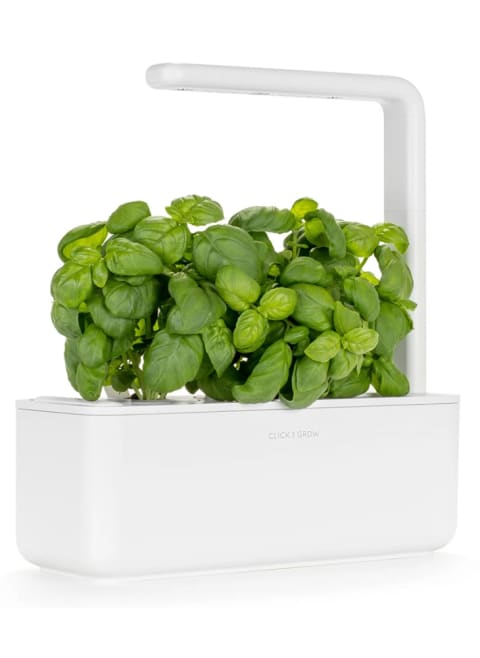
Benefits of herb gardening.
Here are some great benefits you can look forward to with your new herb garden:
It can show you a new favorite herb.
When growing your own herbs, you can cultivate different tasty varieties that are often not available at the grocery store, such as chocolate mint, or lemon thyme.
It ensures you always have fresh ingredients at the ready.
If you have a favorite recipe in mind that calls for herbs, you can't always guarantee the supermarket or farmers market will have what you need. Growing your own garden ensures access to fresh and fragrant herbs, always.
It makes your food more flavorful.
For optimal freshness and flavor, nothing can compare to homegrown. "Herbs always have the most flavor right after they're harvested from the plant," says Enfield.
It's eco-friendly.
When you steer away from store-bought herbs, you cut back on pesky plastic waste in the kitchen.
It saves you money.
Growing your own herbs tends to be a lot cheaper than purchasing them from the grocery store week after week.
It's a healthy habit.
Not only is eating herbs good for us, but it turns out that growing them is too! Gardening can be a great mind-body workout, explains Enfield: "Spending time caring for our plants makes us happy, gets us outdoors, and, if your garden is large enough, gives us plenty of exercise."
More tips for a successful herb garden:
- When growing indoors, make sure to avoid drafty windows and ensure there is good air circulation for your plants.
- If you're new to gardening, opt for transplants over seeds. "Transplants are easier for the beginner, but you can always try some seeds on the side," recommends Pongetti.
- "The best time of day to harvest your herbs is in the morning," says Enfield, as that's when they'll be at their most fragrant and flavorful.
- Beware of the flower: "Herbs also taste best before flowering, so pinch back your herb plants as soon as you notice any flowers forming," says Enfield.
The bottom line.
So there you have it: Everything you need to know to start growing your favorite herbs. Now you just have to find the spot in your yard that gets the most sunlight and decide whether you want to plant directly in the soil or in pots. Or maybe creating an indoor herb garden makes more sense for your needs, in which case you could also start with a nifty kit.
Just remember: Any new endeavor has a learning curve, so don't be afraid to jump in, have fun, learn as you go, and watch your herbs grow.
